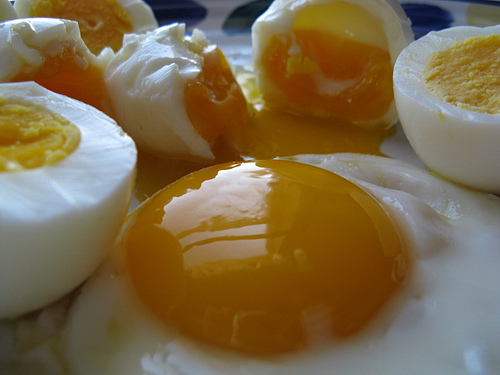I’ve been working pretty intensely at the InterFaith Food Shuttle, and also chipping away at group projects that have been somewhat of a nightmare. But I’m learning a lot about public health and the issues involved in making upstream changes in nutrition and physical activity, so I’m glad I’m in the trenches this summer.
My sister also got married in June, which was a really fun event, and I’m quite happy for her! I was the Maid of Honor so it was fun to get all dolled up and wear a fancy-pants dress.
I’ve also been quite distracted because I met a really awesome guy who I’ve been spending most of my free time with. The funny part is that his last name is Cave – so I really do have a “caveman” in my life at the moment! While things are pretty new with him, meeting him has made me realize that even if you’re really passionate about something (like nutrition), it’s unhealthy to become obsessive to the point of ignoring other aspects of life. We all need a little balance in our lives, so right now I’m working on enjoying myself and cultivating this newfound happiness that has fallen into my lap. 🙂
Therefore, instead of stressing out about writing blog posts right now, I decided to enlist the help of my mom, Pam Schoenfeld. She’s a private practice RD located in Randolph, NJ, and she’s taught me most of what I know about nutrition. She also knows way more than I do, so having her contribute some writing to my blog will be helpful not only to me, but to you all who are seeking nutrition advice. She is also presenting during Sean Croxton’s Real Food Summit, which will be super interesting and has some of my favorite nutrition gurus in the lineup.
So without further ado, here is my mom’s guest post on how to feed picky eaters!
Don’t give up – but be prepared to give in just a little
If all of your children eat what you prepare or choose healthy foods almost all of the time, and by healthy I mean meat, poultry, fish, vegetables, and eggs, you don’t need to bother reading this blog post. But in the likelihood this does not describe any one of your children, you might want to keep reading.
I feel I can speak from own experience as I write down my thoughts on how to nourish the “picky eater.” As a dietitian, we refer to them as “selective eaters,” but whatever they are called, almost every family has one. While my two daughters pretty much would eat most any food I served with the exception of liver and a few other less familiar foods, my son was a much different matter. It was almost a daily challenge to feed him foods that I knew would help him meet his genetic potential (he is now 6’3” tall and strong and I think pretty smart). And unfortunately, since I only learned the truth behind ancestral diets when he was almost 12 years old, it was obviously more difficult to get his already formed tastes acclimated to accepting new but nourishing foods.
Would you like to save this post?
Your email address is 100% safe and will never be sent spam.
So what foods did I try to get him to eat more of – with not a lot of cooperation? Mainly eggs, some types of fish, many vegetables, my homemade chicken soup, soaked grain products, fermented vegetables and dairy, and more grass-fed or pastured meat. One thing he did consume with no resistance was the farm milk we brought in from our neighboring state of Pennsylvania – often with chocolate syrup – but raw and full fat none-the-less.
After I discovered the information on the Weston A. Price Foundation website in 2001, it was almost a daily ritual to serve eggs in one form or the other, and always with the yolks. But this was a big change from our previous ritual of some kind of “whole-grain” cold cereal with pasteurized milk, and maybe a banana or other fruit. Sure, previously I would make eggs a couple times per week, and once a week pancakes or waffles with butter, real maple syrup, and store-bought sausage due to my oldest daughter Jessica’s insistence. But the idea of eating farm eggs for breakfast (with or without oatmeal sometimes) was a new but abnormal routine I was determined to continue.

Well, my son Alex pretty much never liked eggs, much less egg yolks. And it didn’t matter how I prepared them. So I pretty much became the food police and would insist that at least he ate one yolk per day in some form or the other; the whites were optional, but he had to eat the yolk. Most mornings he did put up some resistance, and often I caved in (weak Paleo mom I was – pun intended). My daughter Laura (this blog owner) was never particularly happy about the arguments that would ensue when I placed a plate of two eggs in front of Alex, of course knowing he would only eat one if any at all. I also accompanied the eggs often with my homemade fresh baked, ground and soaked whole wheat, cinnamon buns, loaded with the best butter I could find and sweetened with some real sweetener such as Rapadura. Yes, this was bribery, but it did often work. Other foods for breakfast could be fruit, soaked oatmeal, and real milk. Bacon from local farms did not get eaten too well, so I opted for Applegate Farms instead.
But there were days that Alex prevailed and he would not eat even one bite of his egg yolk, just his dry cereal and some real milk. Okay, we were halfway there anyway. So then I got creative with egg yolks and began to make raw milk shakes with 1-2 yolks, flavored with natural peanut butter and some chocolate syrup. These he would drink. Or later in the day, after school or dinner, I would serve foods where I snuck in as many egg yolks as would not be detectable, such as pasta sauce, taco meat, meat balls or meat loaf, homemade custards, crepes, and even on occasion fruit with Zabaglione sauce which contains about 1 egg yolk per serving. So with all this effort, I think I managed at least one egg yolk per day into his tummy.
Looking back, I do feel the aggravation and argumentation was worth it. Alex now eats eggs with some frequency, even though he admits that he does not particularly like them. He even cooks them for himself in the mornings, usually served with half of a bagel. When he had his own nearby apartment in college, he would gladly take back with him a carton of the eggs I had purchased from our Amish farmer. He knew the difference. When I made homemade hash browns, he would also eat those instead of the bagel. Note to cooks out there: Make your hash or roasted potatoes in half ghee, half olive oil or lard and they are not only super-delicious they will be a great source of vitamin K2 and probably vitamin D. You can buy Pure Indian Foods Grassfed Organic Ghee, or make your own from the best grass-fed butter you can find, it doesn’t have to be raw. Anyway, even children with casein intolerance can usually tolerate ghee with no problem.
Now I do realize this is a lot of work, but to me, making a lasting investment in your child’s health is probably one of the best of all ways to use your time, even it is limited. Getting the kids on board as soon as they begin their first foods is obviously the best, but for many parents that window of opportunity has passed. But don’t give up – there are many ways to nourish the picky eater, and that is something I help parents who meet with me find solutions for.
This post may contain affiliate links. If you click on a link and make a purchase, I may receive a small commission.



+ show Comments
- Hide Comments
add a comment